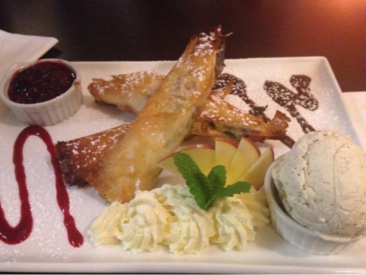Restaurants – The Final Frontier For The Empowerment Of Women
Despite the fashion for fresh local produce the days of slaving over a hot stove are almost over.
As a kid I well remember my mother washing clothes with a wringer washing machine. We thought the whole squeeze through the ringer process looked like fun, as the towels emerged stiff and flat like beach flotsom. I also remember the joy on my mother’s face when she acquired her first automatic washing machine. That was forty years ago. Without a word of a lie, to this very day, my mother marvels at the ease and convenience of her automatic washing machine. This was soon followed by a dishwasher, a car with automatic transmission, and her own bank account. These conveniences coupled with the refrigerator have transformed domestic life – life which mostly falls at the feet of women.
Forty years on and I too love my automatic washing machine and dishwasher as these tasks are now relegated to minor infractions in a world increasingly lived the way I want it to be.
And yet….despite forty years of appliances freeing us from the grim chains of domesticity, there is one chain whose link, although stretched, just refuses to break.
That chain is dinner.
Yes I am talking about cooking. The preparation of food still hangs over women’s heads like flies over rotting ham. While there is an increasingly vast array of convenience foods available, I still find myself peeling potatoes and chopping onions inspired by Jamie’s boundless enthusiasm yet feeling like Gordon’s temperament. Why is it that in an age of convenience, time in the kitchen is so goddam inconvenient?
As many of you will have quite correctly spotted, our world is in fact awash with food outlets. From McDonalds to posh restaurants, it would appear that we are spoilt for food choice. Indeed in my home town there are 175 places you can buy your dinner – cooked and ready to eat.
So, I hear you ask, what is the problem?
The problem is best described by what I call the ‘food continuum’ – represented by fast food at one end (whether its the top end or bottom end depends on your upbringing), and fine dining at the other.
And therein lies my problem.
Most of us do not want takeaways for our dinner everyday, yet we cant afford, in time or money, fine dining. Hence the proverbial slaving over a hot stove. Where is the Toyota Corolla of dinner out? Reliable, competent, nothing flash but does the job nicely over and over again. I am faced with fast-food, and feeling like a slut afterwards (nice at the time but oh the regret) or slow food, and feeling like my wallet has been squeezed like a lemon by a fat fingered chef.
So what does this have to do with urban design?
Simply put, we need to encourage our towns and cities to not only be our foodie playgrounds but our everyday dinner. Just as we have been freed from our washing and ironing, we now need to be freed from our kitchens.
Of course we do have the problem of the foodie crowd who keep telling us how much they love to cook. However, these people are red herrings. There numbers are small and their temperament uneven as they also yearn for food prepared by others, so long as it’s ‘haute homemade’. Throughout zealotry and a strict adherence to farmers markets, these foodies desperately try to maintain the snobbery of food. But let’s face it – they are not you or me.
Urban designers need to grasp this mantle and help democratise eating. While our streets explode with cool cafés, their polished floors reverberating to the monotonous beats of house music, we mustn’t forget that our cities are also for everybody.
In particular, the city offers women freedom from the kitchen. The last bastion of domestic slavery is nearly whipped. Let’s not be tricked by the foodies into believing that food is something that we should be devoting more time to.
Freedom is less time in the kitchen.
Richard Alexander Bain
Self confessed urban critic

